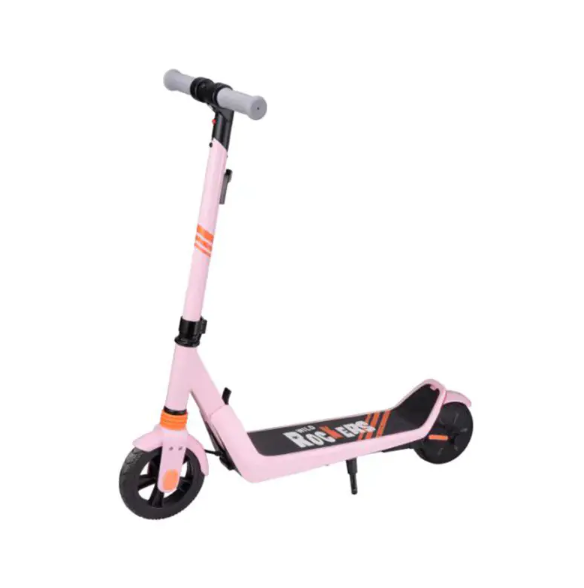What Shapes the Future of Children Urban Scooters

Stepping into a community park or school walkway, it is common to notice how a 2-Wheel Electric Scooter stands beside a Folding Children Kicks Scooter, each chosen by families for different reasons. These two types of scooters reflect how parents evaluate convenience, safety awareness, and daily usability. Many households now look at these products not only as play equipment but also as lightweight mobility tools for short distances.
Practical considerations often begin with construction materials. Most families check the body frame first, searching for a balance between durability and weight. Aluminum alloys remain frequently used, mainly because they support a sturdy feel without adding too much burden for young riders. The folding structure also shapes how children interact with the scooter, so brands spend effort on hinge systems that open and collapse smoothly. Even small adjustments in locking positions can influence the experience when a child brings the scooter to school or places it inside a car trunk.
Motor performance on electric models is judged by stability instead of high force output. Parents focus on how gently a scooter accelerates, particularly for younger users who may still be learning balance. Manufacturers often design two or three speed settings, giving families more control over riding environments. For children unfamiliar with powered mobility, the simple kick-style scooter remains a reliable option. The absence of electrical components creates a quieter and more predictable ride, which many parents consider suitable for early training stages.
Battery housings and wiring channels receive attention from product developers aiming to keep structures clean and less exposed. Some brands move components inside the deck to prevent snagging or accidental contact. This also helps maintain a smoother outline, something appreciated when scooters are carried by hand. Charging habits vary among families, and slower overnight charging remains common for safety confidence. To keep maintenance approachable, manufacturers simplify battery replacement steps and ensure that fastening points are accessible with standard tools.
Wheels also shape the discussion. Urban pathways differ greatly, so scooters with slightly wider wheels often attract families living in neighborhoods with uneven roads. Wider wheels contribute to steadier gliding and reduce vibration, while narrower wheels may appeal to kids who prefer maneuverability. Rim materials and tread shapes continue to evolve, particularly as designers test combinations that reduce noise and rolling resistance.
Handlebar adjustments form another comfort area. Growth spurts happen quickly, so extendable bars help extend product lifespan. Many parents seek a middle range that fits both indoor and outdoor riding. Rubber grips with patterned textures offer a firm hold, especially when small hands become sweaty during warmer months. On models designed for older children, handlebar widths are expanded slightly to support better balance.
Storage and carrying concerns influence many purchasing decisions. A Folding Children Kicks Scooter that collapses into a compact size fits easily into school lockers or the corner of a living room. Electric models are heavier, so some families choose them mainly for routes between home and activity centers. Designers respond by adding lightweight battery modules and retractable carrying handles.
Color palettes shift every year as manufacturers test softer shades, bright graphics, or minimalist lines. Children often select based on personal preference, while parents consider visibility during early evenings. Reflective stickers and subtle frame accents enhance awareness without altering the scooter's overall aesthetic.
Accessory choices depend on daily habits. Simple items such as knee pads, small storage pouches, or clip-on reflectors encourage safer usage. Some families purchase additional wheel sets to adapt scooters to different pavements. Bells or light straps also help kids stay noticeable while riding in shared spaces.
Safety certification remains a core requirement. Brands regularly update product documentation to meet evolving standards, especially those related to battery systems and structural durability. To help families feel more confident, manufacturers often provide usage guidelines that explain recommended rider ages, protective gear suggestions, and care reminders.
- Art
- Causes
- Crafts
- Dance
- Drinks
- Film
- Fitness
- Food
- Giochi
- Gardening
- Health
- Home
- Literature
- Music
- Networking
- Altre informazioni
- Party
- Religion
- Shopping
- Sports
- Theater
- Wellness

